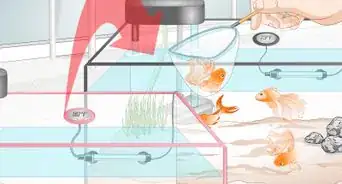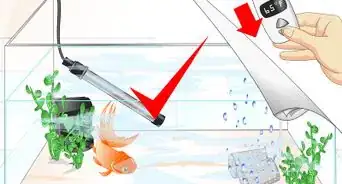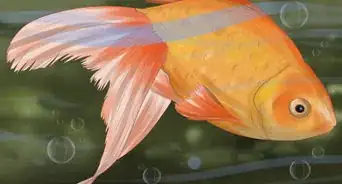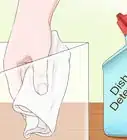wikiHow is a “wiki,” similar to Wikipedia, which means that many of our articles are co-written by multiple authors. To create this article, 37 people, some anonymous, worked to edit and improve it over time.
There are 8 references cited in this article, which can be found at the bottom of the page.
This article has been viewed 470,997 times.
Learn more...
If your aquarium fish is seriously ill, it's more humane to kill it than to let it suffer. A fresh-caught fish will inevitably feel some pain, but there are ways to minimize this and kill it quickly.
Steps
Preparing an Aquarium Fish for Euthanasia
-
1Ask a veterinarian if possible. There are many species of aquarium fish, and for most of them the ideal drug dosages and other conditions are unknown. A veterinarian is trained to notice signs of suffering and adjust the process if necessary, giving your fish a less painful death.
- Only methods reasonable to perform at home are included in this article. Other methods, such as electrocution and lethal injection, are difficult to perform humanely without training, and/or can harm the person performing them.[1]
-
2Look up your species. An ice bath or a particular drug may be humane for one fish species, and cause suffering in another.[2] Wherever possible, the instructions below give you the information you need to avoid a mistake. However, an online search for euthanasia information of your specific species can lead to a more concrete recommendation. Most fish species have not been studied, but it's still worth a few minutes in case yours has.Advertisement
-
3Keep the fish in a low-stimulation environment. Keep the fish in a quiet room. Block light with an opaque aquarium lid, or switch to red lighting, which will barely penetrate the water. These measures will reduce the amount of light stimulation the fish gets, while leaving enough light for you to work.[3]
-
4Withhold food for 24–48 hours before drug euthanasia. Unless the fish is at death's door, wait until the fish has gone without food for this long. The fish will absorb the lethal drug more quickly on an empty stomach, and be less likely to regurgitate it.[4]
- Skip this step if you are using a method that does not involve drugs.
-
5Continue on to one of the methods below. All the methods listed below are humane ways to euthanize a fish. Read the instructions carefully before you begin. Not all methods are appropriate for all species. A euthanasia bath is not appropriate for fish you intend to eat.
Preparing a Euthanasia Bath
-
1Prepare a separate tank. Unless all the fish in a tank need to be euthanized, you'll need a second container. Transfer some of the water from the current tank to a new, clean container, preferably with a similar aeration and temperature control setup.[5] Using water from a different source or at a different temperature can stress the fish, or cause an inhumane death.
- Some drugs, including MS-222, may not be effective in temperatures below 10ºC (50ºF).
- Euthanizing a large tank of fish is difficult, and requires measurements of oxygen and chemical concentration for best dosage calculations.[6] Ask a veterinarian to perform this if at all possible.
-
2Consider using MS-222. Also sold as tricaine methanesulfonate, "Finquel," or "Tricaine-S" at pet stores, this is the most reliable option of the widely available drugs. You can find this at pet supply stores.[7] This is the only widely available drug approved by the FDA for this purpose. Use 5–10 times the amount the label recommends for anaesthesia, usually 250 to 500 mg/L.[8]
- Do not eat fish killed this way.
-
3Do not use alcohol. Many people will tell you alcohol is a pain free way to euthanize your fish. This is incorrect. It causes burning in the gills and is very painful for the fish to endure.
- Using alcohol to euthanize the fish has been described as dipping a person in gasoline to euthanize them. Don’t do it!
-
4Use clove oil cautiously. It's not easy to tell how concentrated a given bottle of clove oil is, or even what exactly it contains. It may put your fish to sleep but fail to kill it. The fish will not be safe for eating, and the water may cause harm if dumped in the water supply. If you decide to use it, try this method:[9]
- Shake one drop in water until milky, then add to the tank.
- When the fish is asleep at the bottom, shake and add another 13 drops per liter of water (50 drops per gallon).
-
5Transfer the fish. Once you've added the chosen drug, net the fish and quickly move it to the euthanasia bath. Handle as little as possible to avoid causing stress.
-
6Wait until the fish is dead. Any euthanizing drug can send the fish to sleep if too little is used. Death often takes 30 minutes to arrive, and you may need to wait 2 hours to be sure.[10] Watch carefully for the following signs of death:[11] [12]
- No movement of gill flap for 10 minutes. (Usually following spasms 1 minute apart.)
- No movement of eye when fish is rocked from side to side.
- Very slow heart rate. The heart may continue after death, but a strong, persistent beat means the fish is alive.
- If you do not see these signs within an hour or two, or if the fish wakes up again, add more of the drug.
- If you want to be certain the fish is dead, kill it with the physical methods below, or freeze it in ice water. These should not cause pain if the fish is deeply anaesthetized.
Killing Physically
-
1Consider your own ability and reaction. These methods are only humane if you can perform them accurately and quickly. Skip to a different section if you think the sight of gore or a struggling fish will affect you. These methods are usually used to kill food fish or laboratory research subjects, not family pets.
- Unless you're experienced with fish anatomy, practice on dead fish first so you can perform these quickly and without mistakes.
-
2Macerate tiny fish. Fish less than 2 cm (¾ inch) long can be killed instantly in a fish macerator, which chops it apart with rapidly moving blades.[13] Make sure to use a macerator intended for exactly your size of fish.
- The larger the fish is, the less humane this death is. Even if you have a macerator intended for larger fish, it may cause suffering.
-
3Knock the fish unconscious (optional). Stun the fish by clubbing it just above the eyes, with an appropriately sized, hard object. Repeat with more force if the fish is still conscious.[14] There is evidence that at least some fish species can remain conscious after decapitation, so this step is highly recommended.[15]
- Fish species adapted for low oxygen conditions are more likely to remain conscious after decapitation.[16]
-
4Decapitate the fish. Hold down the head and sever it with a powerful motion from a sharp knife, just behind the skull.[17]
- Alternatively, you can insert the knife behind the skull and sever the spinal cord and vertebrae. This "cervical transection" is less messy, but not recommended unless you have experience with fish anatomy.
-
5Pith the brain immediately. Even after decapitation, the fish may still be alive for a short time. Ensure a rapid death by immediately inserting a sharp spike or knife into the brain, between the eyes. Push forward and backward to destroy the brain and the end of the spinal cord.[18]
- You can use online resources to locate the most effective point to insert the spike, for various edible species.[19]
Community Q&A
-
QuestionWho would kill a fish?
 Community AnswerSome people can't stand to see their sick pets suffer ... that's one reason.
Community AnswerSome people can't stand to see their sick pets suffer ... that's one reason. -
QuestionMy fish is suffering from severe fin rot, and I've been trying to cure it with no luck. He's having a hard time breathing. Should I kill him?
 Community AnswerFirst try to quarantine him, do a complete water change, and use a natural botanical treatment (available online or in many pet stores). If that does not help, yes, it is probably time to humanely end his suffering.
Community AnswerFirst try to quarantine him, do a complete water change, and use a natural botanical treatment (available online or in many pet stores). If that does not help, yes, it is probably time to humanely end his suffering. -
QuestionWhy would someone want to kill their aquarium fish?
 Community AnswerIf the fish is extremely injured/wounded almost to the point of death, leaving it unchecked may cause the fish extreme suffering. Killing it instantly avoids suffering.
Community AnswerIf the fish is extremely injured/wounded almost to the point of death, leaving it unchecked may cause the fish extreme suffering. Killing it instantly avoids suffering.
Warnings
- Do not let the fish suffer by rushing the job and euthanizing improperly. In low enough doses, some of these chemicals will be painful but not kill, so do it right.⧼thumbs_response⧽
- Make sure your fish cannot be cured or saved, or is in real pain. Do not euthanize a fish because you don't want it or it came down with some mild fungus. Tuberculosis is an example of a time when euthanizing is acceptable.⧼thumbs_response⧽
- Do not use a different method without consulting a veterinarian. Flushing, suffocating, or microwaving are inhumane methods. Freezing or boiling are humane for some species, and extremely painful for others.⧼thumbs_response⧽
- Some fish may act erratic or energetic shortly before they fall asleep, especially with clove oil. This may or may not mean that the fish is suffering. The drugs listed here cause this to happen less often than other drugs.⧼thumbs_response⧽
References
- ↑ https://www.avma.org/KB/Policies/Documents/euthanasia.pdf
- ↑ http://onlinelibrary.wiley.com/doi/10.1046/j.1365-2109.2003.00804.x/abstract
- ↑ https://www.avma.org/KB/Policies/Documents/euthanasia.pdf
- ↑ https://www.researchgate.net/profile/Vera-Baumans/publication/14097431_Recommendations_for_euthanasia_of_experimental_animals_Part_2_DGXT_of_the_European_Commission/links/5511790c0cf21209d528a252/Recommendations-for-euthanasia-of-experimental-animals-Part-2-DGXT-of-the-European-Commission.pdf
- ↑ https://www.avma.org/KB/Policies/Documents/euthanasia.pdf
- ↑ https://www.avma.org/KB/Policies/Documents/euthanasia.pdf
- ↑ http://www.ratemyfishtank.com/articles/81
- ↑ https://www.avma.org/KB/Policies/Documents/euthanasia.pdf
- ↑ http://www.wisegeek.org/what-is-the-most-humane-way-to-euthanize-a-fish.htm
- ↑ http://www.fishchannel.com/fish-health/euthanasia.aspx
- ↑ https://www.avma.org/KB/Policies/Documents/euthanasia.pdf
- ↑ https://www.researchgate.net/profile/Vera-Baumans/publication/14097431_Recommendations_for_euthanasia_of_experimental_animals_Part_2_DGXT_of_the_European_Commission/links/5511790c0cf21209d528a252/Recommendations-for-euthanasia-of-experimental-animals-Part-2-DGXT-of-the-European-Commission.pdf
- ↑ https://www.researchgate.net/profile/Vera-Baumans/publication/14097431_Recommendations_for_euthanasia_of_experimental_animals_Part_2_DGXT_of_the_European_Commission/links/5511790c0cf21209d528a252/Recommendations-for-euthanasia-of-experimental-animals-Part-2-DGXT-of-the-European-Commission.pdf
- ↑ http://kb.rspca.org.au/What-is-the-most-humane-way-to-kill-a-fish-intended-for-eating_451.html
- ↑ https://www.researchgate.net/profile/Vera-Baumans/publication/14097431_Recommendations_for_euthanasia_of_experimental_animals_Part_2_DGXT_of_the_European_Commission/links/5511790c0cf21209d528a252/Recommendations-for-euthanasia-of-experimental-animals-Part-2-DGXT-of-the-European-Commission.pdf
- ↑ https://www.avma.org/KB/Policies/Documents/euthanasia.pdf
- ↑ https://www.avma.org/KB/Policies/Documents/euthanasia.pdf
- ↑ https://www.researchgate.net/profile/Vera-Baumans/publication/14097431_Recommendations_for_euthanasia_of_experimental_animals_Part_2_DGXT_of_the_European_Commission/links/5511790c0cf21209d528a252/Recommendations-for-euthanasia-of-experimental-animals-Part-2-DGXT-of-the-European-Commission.pdf
- ↑ http://www.ikijime.com/
- ↑ http://www.fishchannel.com/fish-health/euthanasia.aspx
About This Article
To humanely kill a fish, decapitate it by holding the head down and severing it with a powerful motion from a sharp knife. Alternatively, you can insert the knife behind the skull and sever the spinal cord and vertebrae, which is less messy than a full decapitation. Even after these measures, sometimes it takes a few minutes for the fish to die, so to ensure a rapid death you may have immediately insert a sharp spike or knife into the brain, between the eyes. To learn how to euthanize an aquarium fish, keep reading.

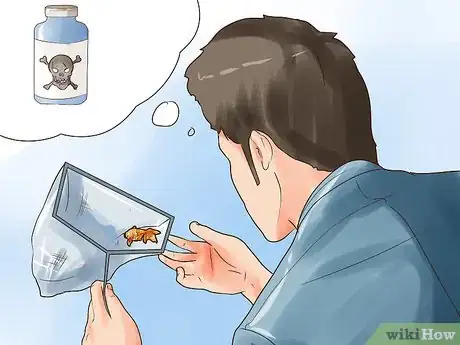
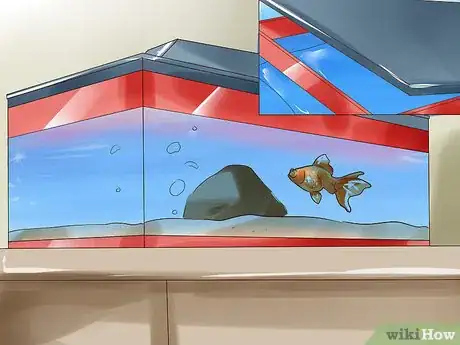
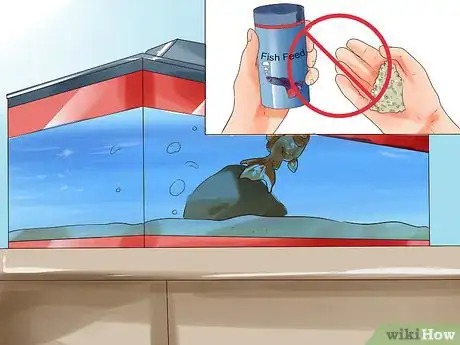
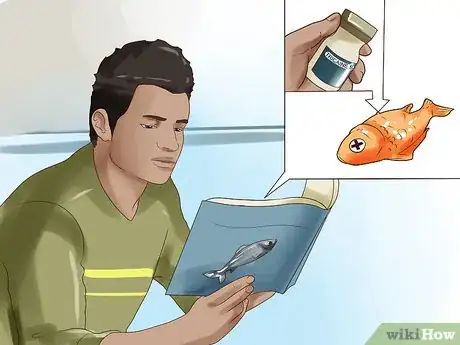
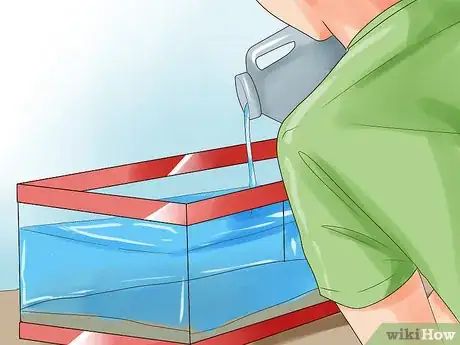
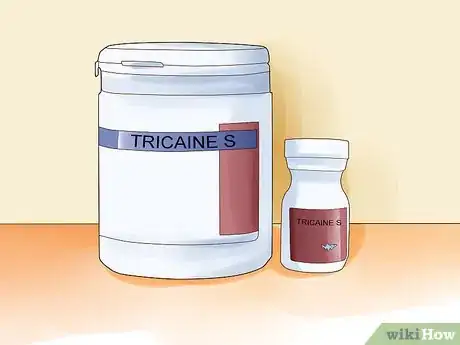
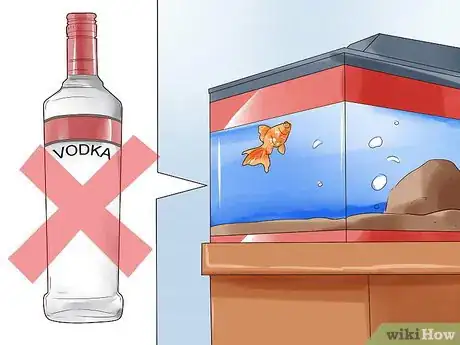
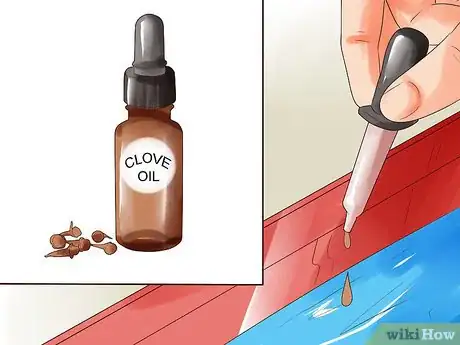
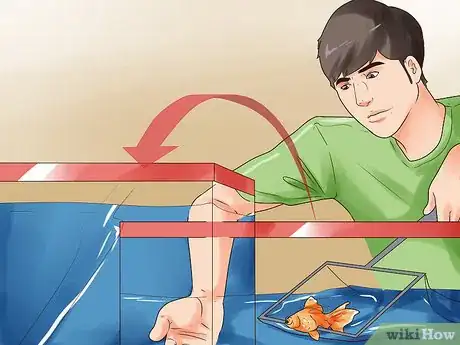

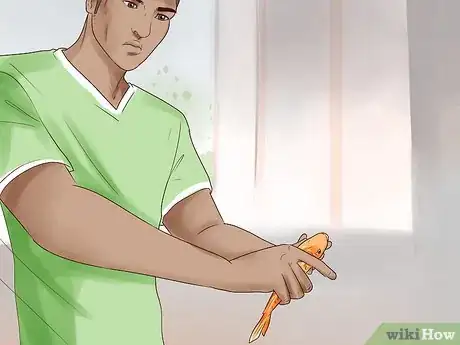
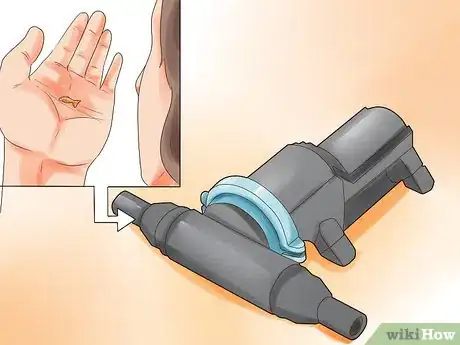
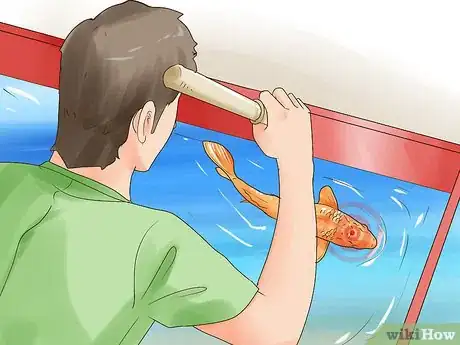
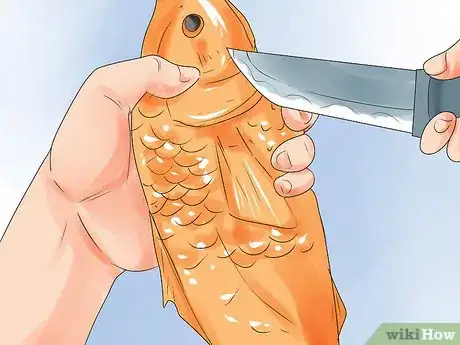
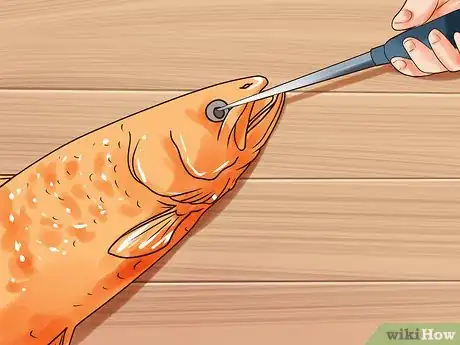
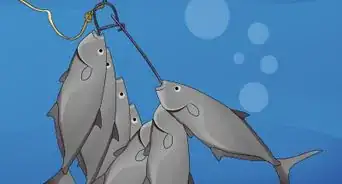

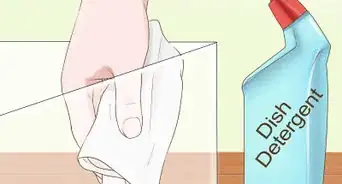


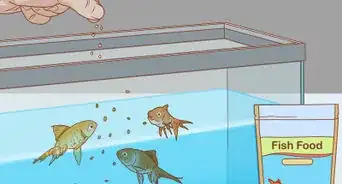
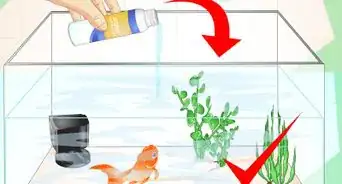
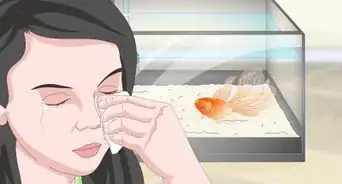
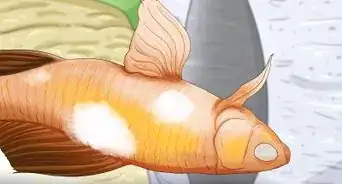
-Step-16.webp)
